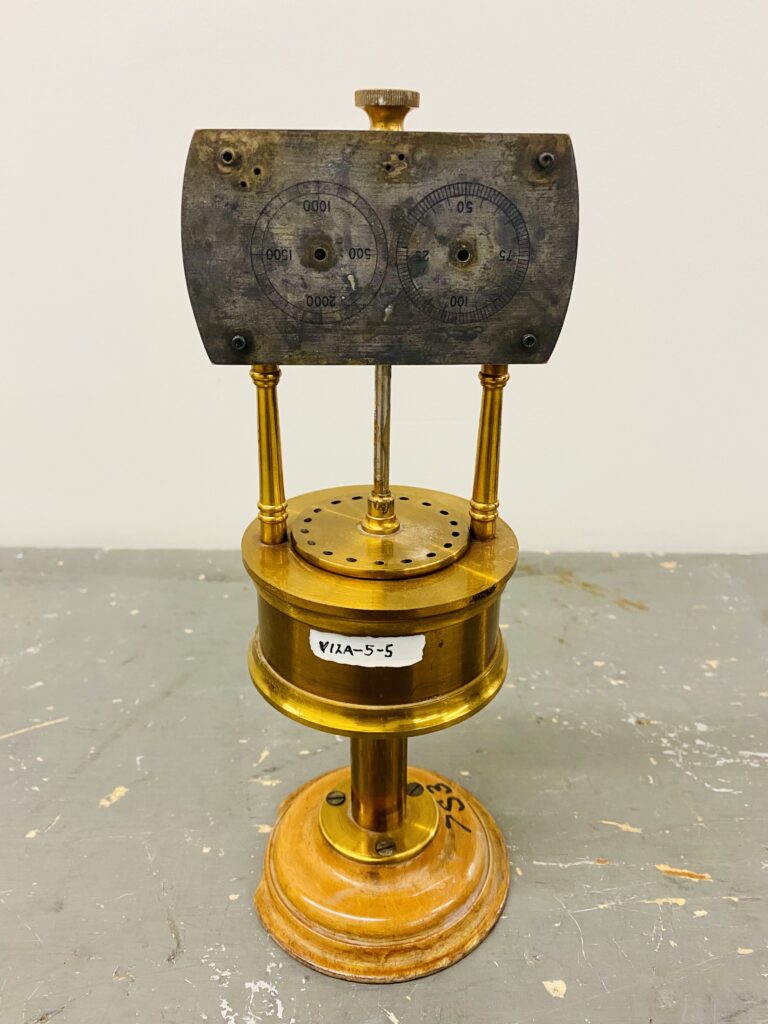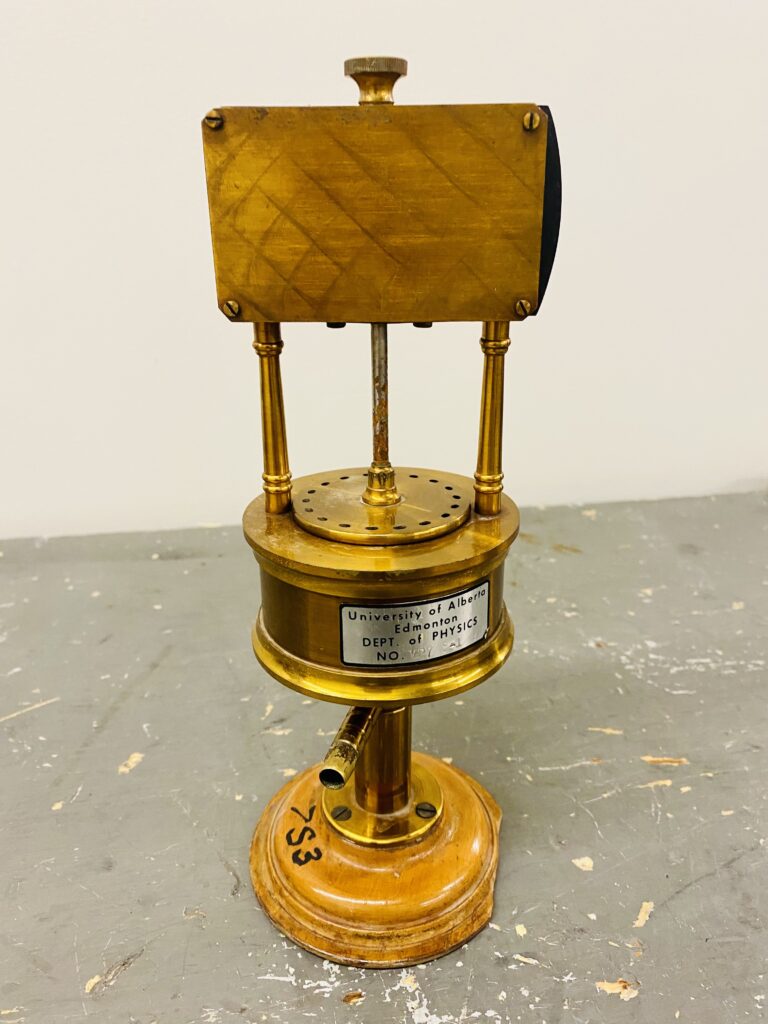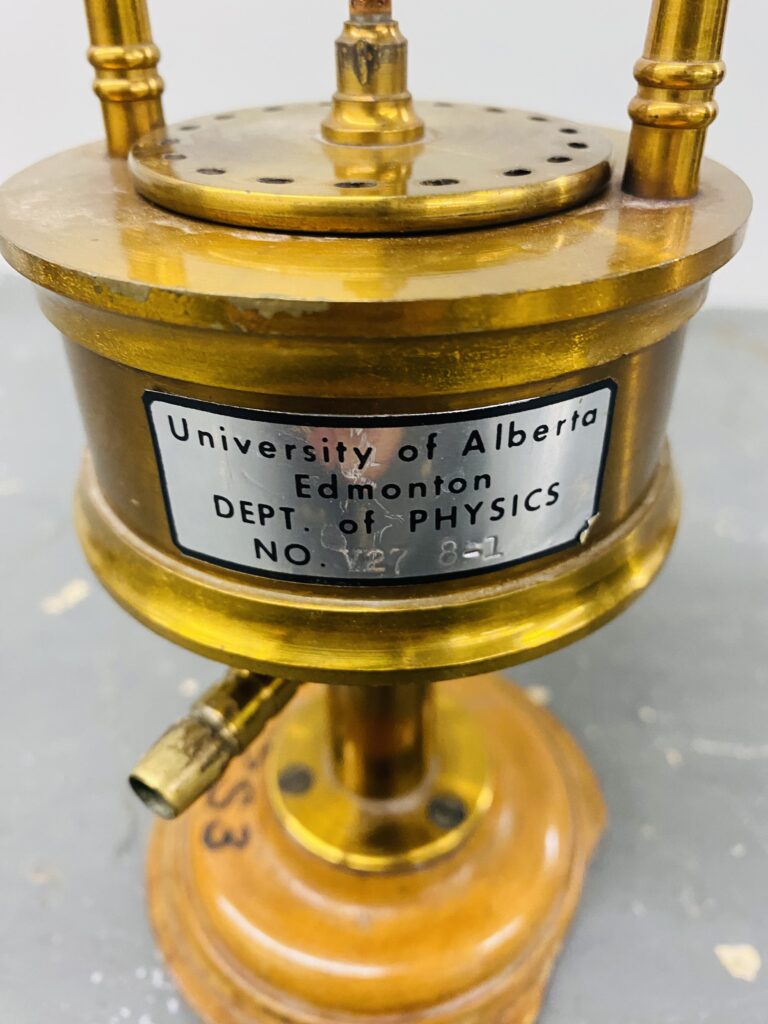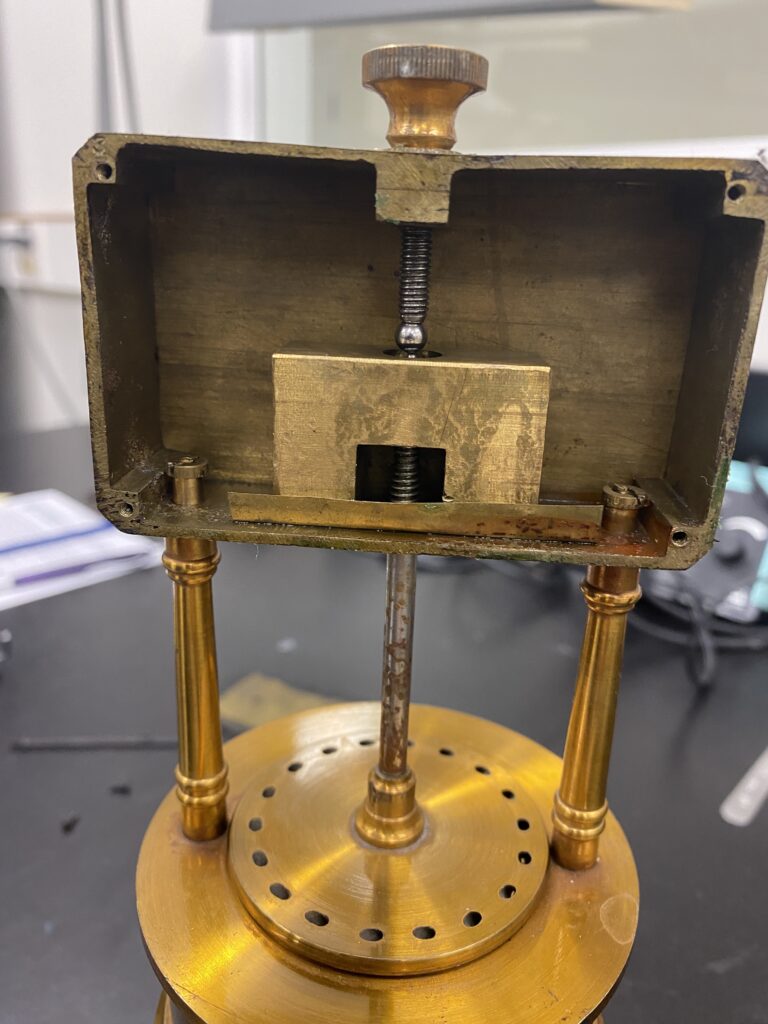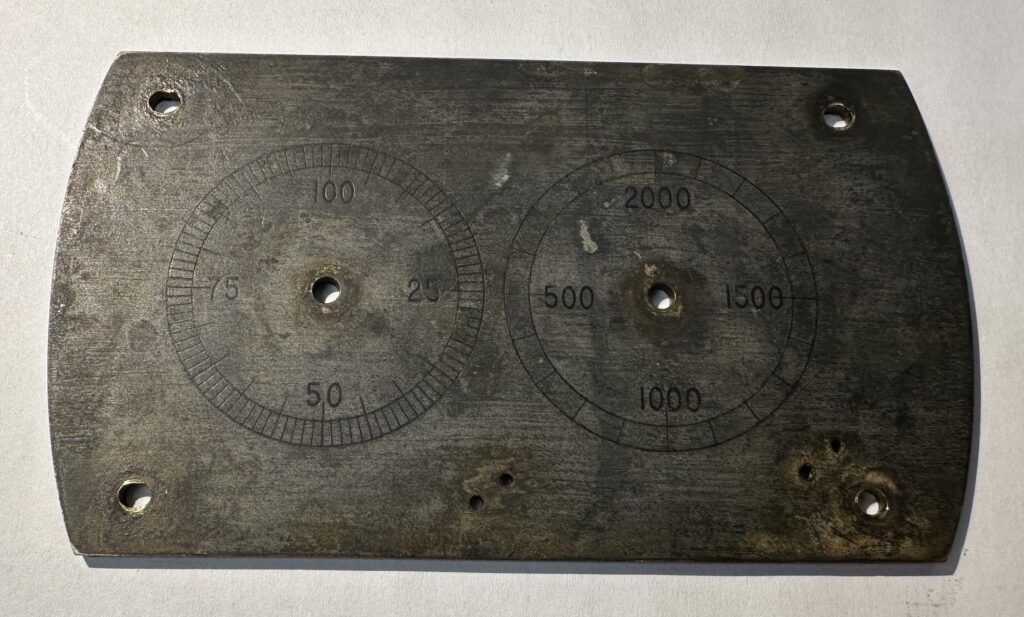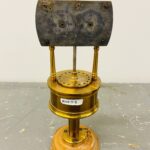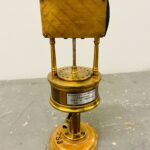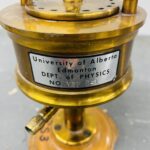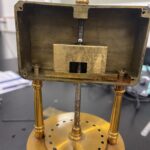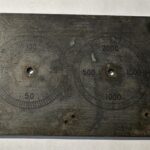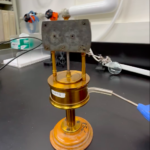Artefacts
Cagniard de la Tour- type Siren
Cagniard de la Tour- type Siren
On the bottom of the base is written "7S3" in marker.
It is written "V2A-5-5" on the brass cylindrical chamber.
Description
This type of siren was invented by Charles Cagniard, originally developed to measure the number of vibrations of a body in a given time. Cagniard’s siren was one of the first artificial sound sources with a frequency that varied depending on the speed of rotation. In the 17th century, Robert Hooke had developed a device that produced sounds from rotating a toothed wheel (later called the Savart wheel). The siren did this with air and holes. It consisted of a rotating round metal disc with holes punched in regular intervals, laid on top of a fixed disc of the same size with holes in the same places. The holes in the two disks in opposite directions direct the airflow, when air is pumped through a chamber below the fixed disc the air pressure begins to rise, causing the top disc to start rotating. As the rotation speed exceeds twenty impulses per second, the siren begins to sing. Further changes in disc speed alter the sound’s pitch and volume. The number of turns is registered on a dial that sits on top of the siren, showing the number of vibrations per second.
Here is the description given by Ganot: “For the sake of simplicity, let us first suppose that in the moveable disk A there are eighteen holes, and in the fixed plate B only one, which faces one of the upper holes. The wind from the bellows striking against the sides of the latter, the moveable disc begins to rotate, and the space between two of its consecutive holes closes the hole in the lower plate. But as the disc continues to turn from its acquired velocity, two holes are again opposite each other, a new impulse is produced, and so on. During a complete revolution of the disc the lower hole is eighteen times open and eighteen times closed. A series of effluxes and stoppages is thus produced, which makes the air vibrate, and ultimately produces a sound when the successive impulses are sufficiently rapid. If the fixed plate, like the moving disc, has eighteen holes, each hole would separately produce the same effect as a single one, the sound would be eighteen times as intense, but the number of vibrations would not be increased.” […]
“Since the sound rises in proportion to the velocity of disc A, the wind is forced until the desired sound is produced. The same current is kept up for a certain time, two minutes for example, and the number of turns read off. This number multiplied by 18, and divided by 120, indicates the number of vibrations in a second.”
Although earlier in their history, sirens had been used for acoustical research, the primary purpose of this siren was most likely educational, serving to demonstrate acoustic phenomena. It was particularly useful for illustrating the production and properties of pure tones when driven by compressed air, as well as the auditory effects that arise when these tones interact. When invented in the early 19th century, the siren introduced a concept introduced a concept of sound based on continuous discreet pulses.
In order to operate, one connected the base to the lecture bench air supply, and then turning on the air supply, a stream of air is cut by the blades of the siren, producing a pulsed pressure pattern, heard as the siren’s noise. The gauges measured changes due to varying speed and pressure.
Dimensions: Width: 9 cm; Height 26 cm; Base width: 10 cm.
Condition: Fair condition, some minor tarnishing on the surface. A piece is broken off the base. The instrument panel has missing pointers and oxidation can be clearly observed. Input air can still make sound.
© 2015 – 2026 Humboldt-Universität zu Berlin

